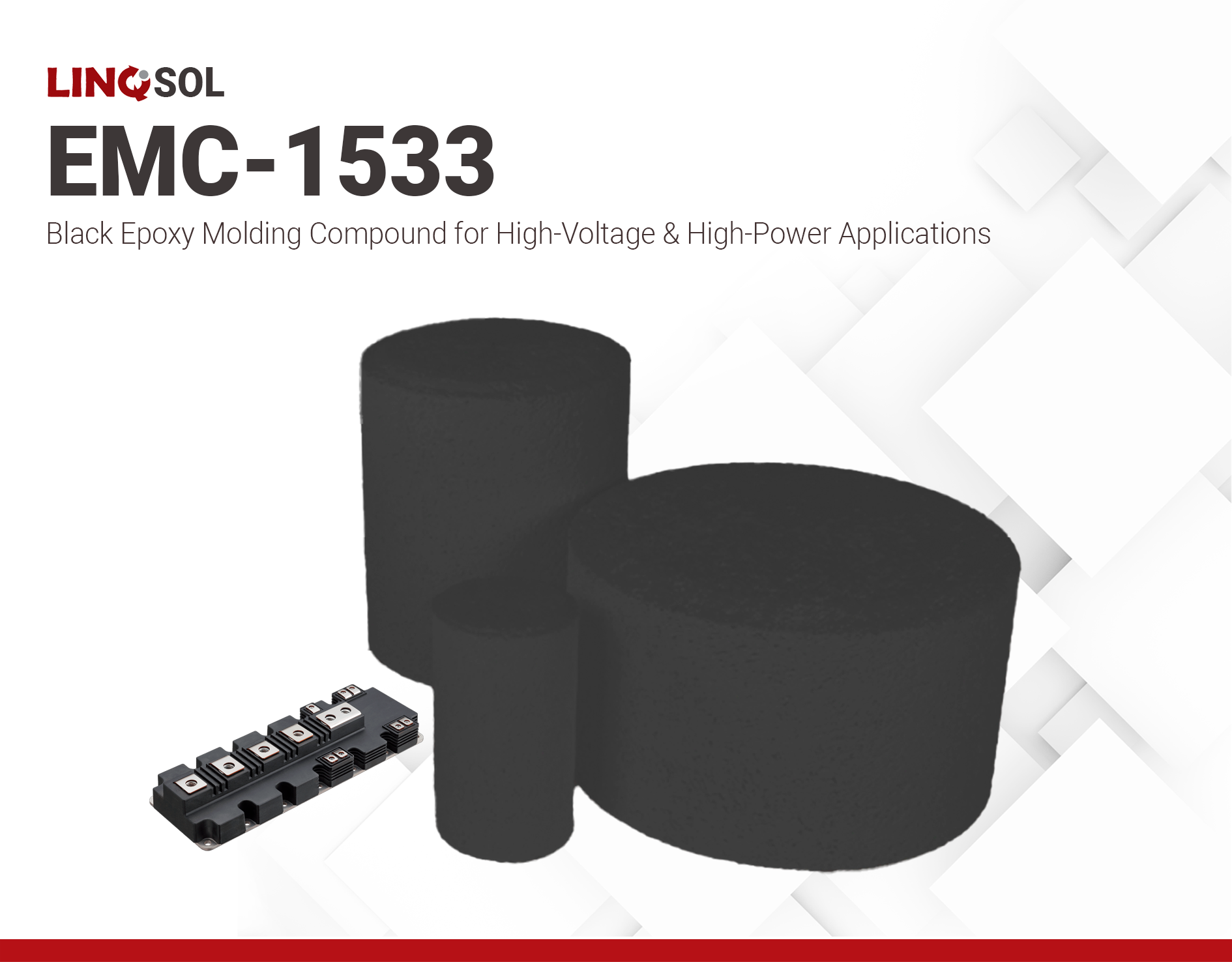LINQSOL EMC-1533 | Black Epoxy Molding Compound
- Green molding compound
- Designed for high-power devices
- Extra High Tg
Product Description
LINQSOL EMC-1533 is a green epoxy molding compound specifically developed for high-voltage and high-power devices. It offers low modulus to meeting low-stress requirements. With extra high glass transition temperature (Tg = 215 °C), minimal moisture absorption, a high comparative tracking index (CTI = 600 V), and a UL 94 V-0 flammability rating, EMC-1533 guarantees strong performance and outstanding reliability. Overall, LINQSOL EMC-1533 seamlessly integrates advanced material properties, safety compliance, and superior performance, precisely meeting the stringent demands of high-power semiconductor applications.
LINQSOL EMC-1535 is available in pressed pellets in a wide range of sizes to meet specific customer needs. Contact us for more product information, custom sizes, or other specific requirements.
Technical Specifications
| General Properties | |||||||
| Filler Content | 84 % | ||||||
| Filler Size Cut | 75 µm | ||||||
| Specific Gravity Specific Gravity Specific gravity (SG) is the ratio of the density of a substance to the density of a reference substance; equivalently, it is the ratio of the mass of a substance to the mass of a reference substance for the same given volume. For liquids, the reference substance is almost always water (1), while for gases, it is air (1.18) at room temperature. Specific gravity is unitless. | 1.96 | ||||||
| Physical Properties | |||||||
| Spiral Flow @ 175°C | 85 cm | ||||||
| Chemical Properties | |||||||
| |||||||
| Moisture absorption | 0.35 % | ||||||
| Electrical Properties | |||||||
| |||||||
| |||||||
| Volume Resistivity Volume Resistivity Volume resistivity, also called volume resistance, bulk resistance or bulk resistivity is a thickness dependent measurement of the resistivity of a material perpendicular to the plane of the surface. | 3.3e 16 Ohms⋅cm | ||||||
| Mechanical Properties | |||||||
| |||||||
| |||||||
| Molded Shrinkage | 0.22 % | ||||||
| |||||||
| Thermal Properties | |||||||
| |||||||
| |||||||
| Glass Transition Temperature (Tg) Glass Transition Temperature (Tg) The glass transition temperature for organic adhesives is a temperature region where the polymers change from glassy and brittle to soft and rubbery. Increasing the temperature further continues the softening process as the viscosity drops too. Temperatures between the glass transition temperature and below the decomposition point of the adhesive are the best region for bonding. The glass-transition temperature Tg of a material characterizes the range of temperatures over which this glass transition occurs. | 215 °C | ||||||
| UL 94 Rating UL 94 Rating Flammability rating classification. It determines how fast a material burns or extinguishes once it is ignited. HB: slow burning on a horizontal specimen; burning rate less than 76 mm/min for thickness less than 3 mm or burning stops before 100 mm V-2: burning stops within 30 seconds on a vertical specimen; drips of flaming particles are allowed. V-1: burning stops within 30 seconds on a vertical specimen; drips of particles allowed as long as they are not inflamed. V-0: burning stops within 10 seconds on a vertical specimen; drips of particles allowed as long as they are not inflamed. 5VB: burning stops within 60 seconds on a vertical specimen; no drips allowed; plaque specimens may develop a hole. 5VA: burning stops within 60 seconds on a vertical specimen; no drips allowed; plaque specimens may not develop a hole | V-0 | ||||||



